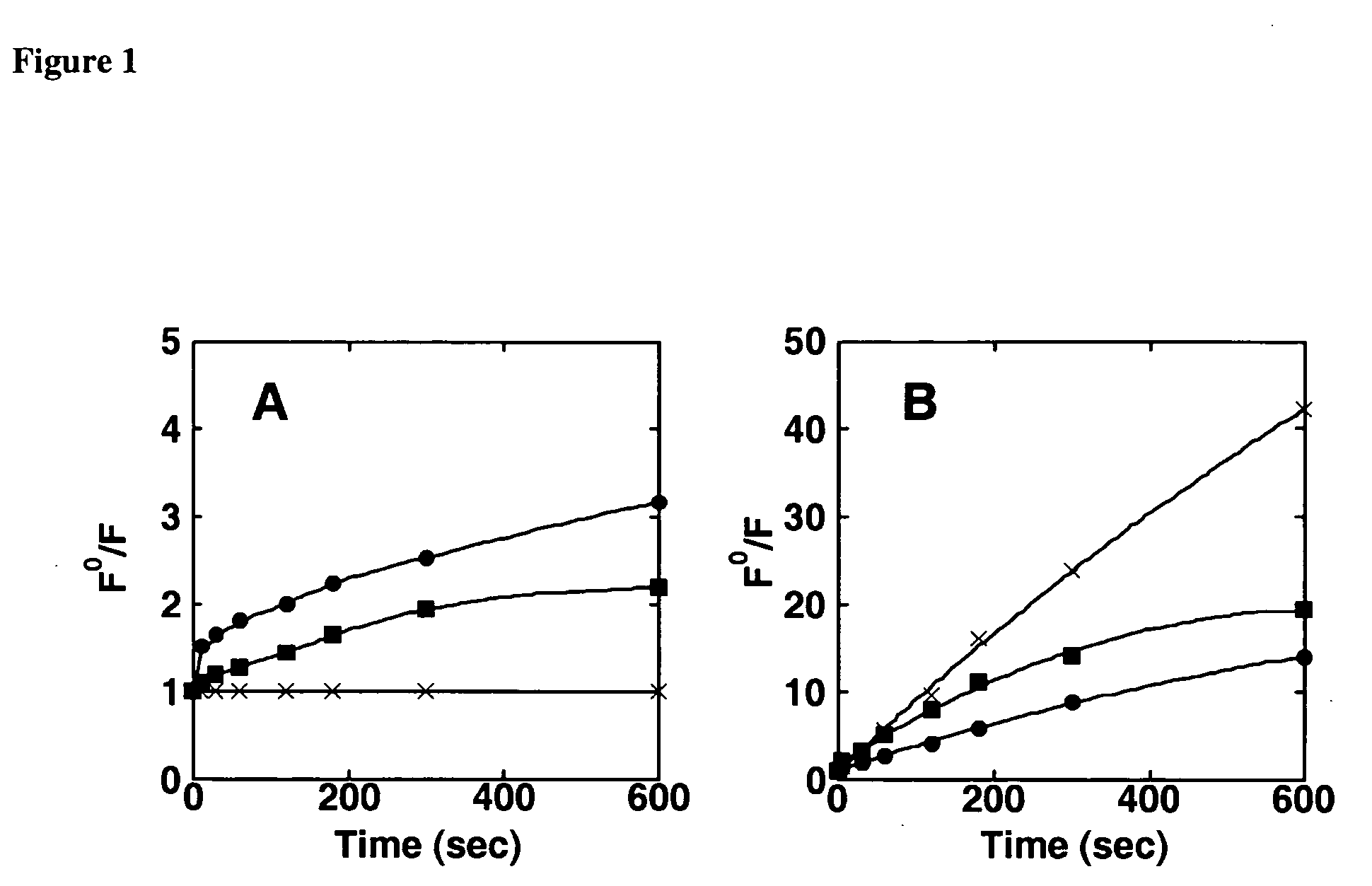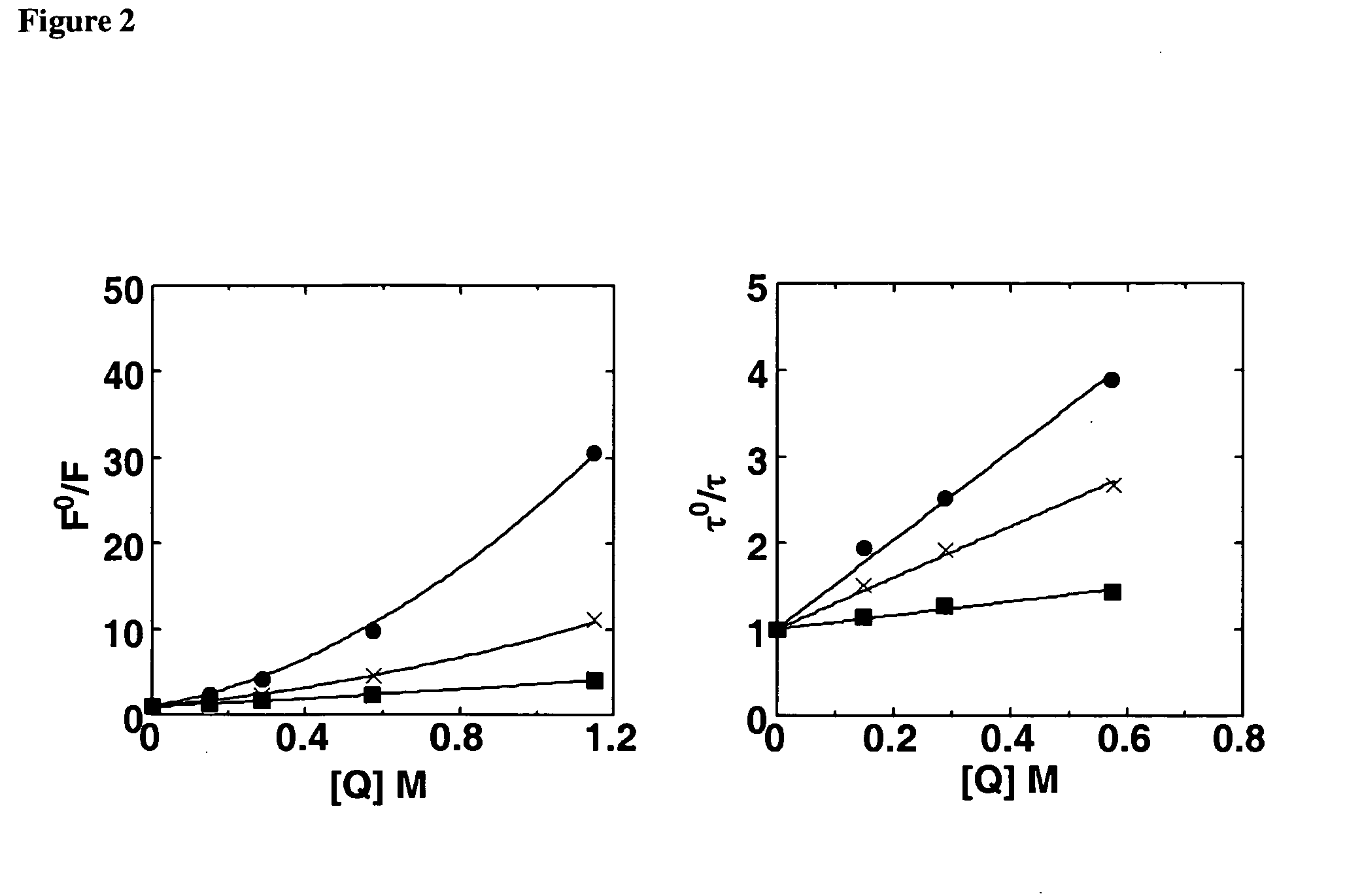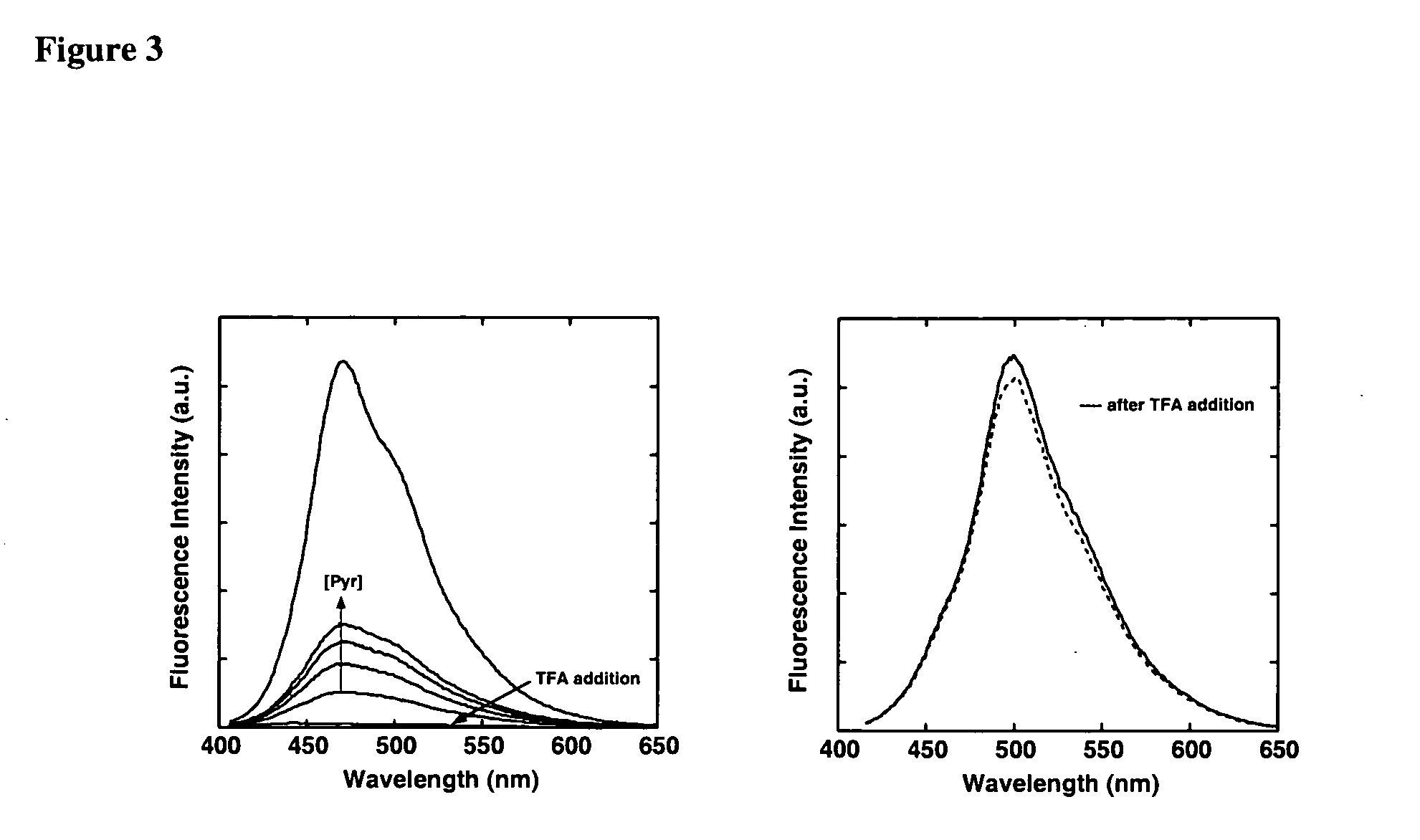Fluorescent, semi-conductive polymers, and devices comprising them
a semi-conductive polymer and fluorescence technology, applied in the direction of solid-state devices, discharge tube/lamp details, biological testing, etc., can solve the problems of reducing conjugation, causing deviation from planarity, and reducing conjugation,
- Summary
- Abstract
- Description
- Claims
- Application Information
AI Technical Summary
Benefits of technology
Problems solved by technology
Method used
Image
Examples
example 1
[0205] 1,4-Dimethylanthracene (1). To a solution of 1,4-dimethylanthraquinone (1 g, 4.24 mmol) suspended in 40 mL of isopropanol was added sodium borohydride (1.6 g, 42.4 mmol) in portions over 1 h at room temperature with stirring. The reaction mixture was left to stir at this temperature for an additional 30 min before heating to reflux overnight. The solution was then cooled to room temperature and quenched by pouring into 5% HCl solution. The mixture was left to stir for 1 hr and the solution was filtered to give a yellow solid. The solid was further recrystallized from ethanol to give the product 1 as a bright yellow solid (0.795 g, 92%): m.p. 70-72° C. (lit1. m.p. 74° C.); 1H NMR (300 MHz, CDCl3): 8.56 (2H, s), 8.06 (2H, dd, J=6.5 and 3.3 Hz), 7.50 (2H, dd, J=6.5 and 3.3 Hz), 7.22 (2H, s), 2.82 (6H, s); HR-MS (EI) calcd. for C16H14 (M+): 206.11, found: 206.11.
example 2
[0206] 9,10-Dihydro-9,10-(1′,2′-dicarbomethoxy)etheno-1,4-dimethyl anthracene (2a). To a solution of 1,4-dimethylanthracene 1 (0.55 g, 2.67 mmol) in 10 mL xylene was added dimethylacetylenedicarboxylate (1.90 g, 13.34 mmol) at room temperature and stirred at 140° C. for 24 h. The mixture was allowed to cool to room temperature and the reaction solvent was removed under vacuum to give a solid. Further purification by recrystallization from a mixture of dichloromethane and methanol (1:3) gave the product 2a as a white solid (0.84 g, 90%): m.p. 139-140° C.; 1H NMR (300 MHz, CDCl3): 7.38 (2H, dd, J=5.4 and 3.0 Hz), 7.03 (2H, dd, J=5.4 and 3.0 Hz), 6.75 (2H, s), 5.72 (2H, s), 3.81 (6H, s), 2.46 (6H, s); 13C NMR (75 MHz, CDCl3): 166.2, 147.3, 144.0, 142.1, 130.1, 126.8, 125.6, 124.0, 52.8, 49.6, 18.7; HR-MS (EI) calcd. for C22H20O4 (M+): 348.14, found: 348.13.
example 3
[0207] 9,10-Dihydro-9,10-(1′,2′-bis(trifluoromethyl))etheno-1,4-dimethyl anthracene (2b). m.p. 155-156° C.; 1H NMR (300 MHz, CDCl3): 7.41 (2H, dd, J=5.4 and 3.0 Hz), 7.07 (2H, dd, J=5.4 and 3.0 Hz), 6.79 (2H, s), 5.67 (2H, s), 2.44 (6H, s); 13C NMR (75 MHz, CDCl3): 167.3, 143.2, 141.3, 130.3, 127.2, 126.1, 124.1, 48.1, 18.3; HR-MS (EI) calcd. for C20H14F6 (M+): 368.0994, found: 368.0995.
PUM
| Property | Measurement | Unit |
|---|---|---|
| weight | aaaaa | aaaaa |
| emission wavelength | aaaaa | aaaaa |
| emission wavelength | aaaaa | aaaaa |
Abstract
Description
Claims
Application Information
 Login to View More
Login to View More - R&D
- Intellectual Property
- Life Sciences
- Materials
- Tech Scout
- Unparalleled Data Quality
- Higher Quality Content
- 60% Fewer Hallucinations
Browse by: Latest US Patents, China's latest patents, Technical Efficacy Thesaurus, Application Domain, Technology Topic, Popular Technical Reports.
© 2025 PatSnap. All rights reserved.Legal|Privacy policy|Modern Slavery Act Transparency Statement|Sitemap|About US| Contact US: help@patsnap.com



